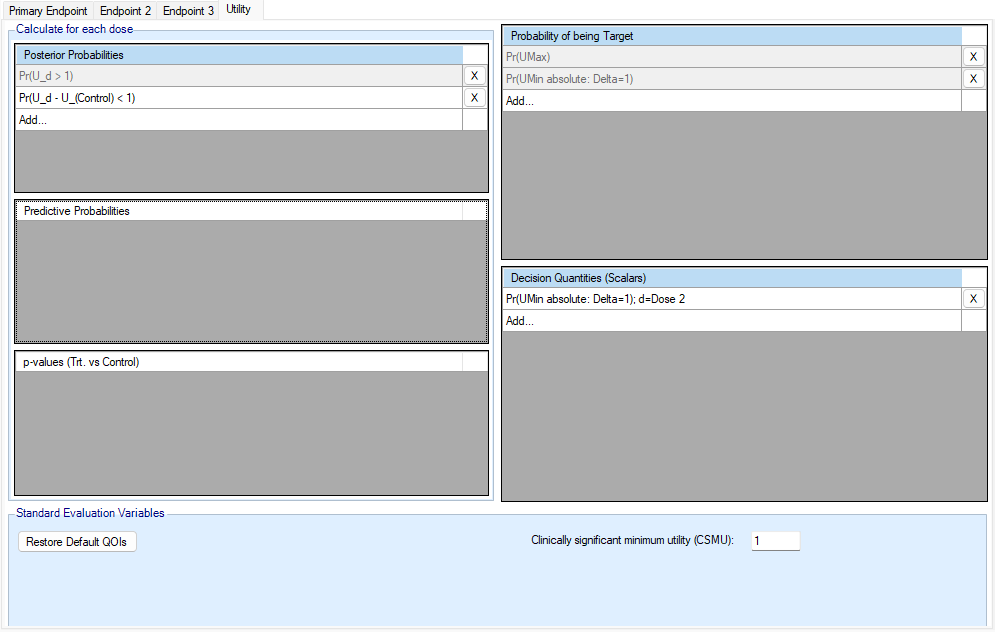The multiple endpoint engine allows the user to specify the quantities of interest for each endpoint in the same way that the continuous and dichotomous engines allow for specifications of QOIs.
The QOI tab in the multiple endpoint engine has a set of sub-tabs that are not present in the single endpoint engines. All of the sub-tabs except the last correspond to one of the endpoints. These tabs create QOIs that are only calculated for a single endpoint.
The last sub-tab on the multiple endpoint QOI page is the “Utility” tab. The utility tab exists so that decision making quantities can be calculated base on the distribution of the overall utility.

Utility QOIs
Since the utility of an arm has a distribution, as discussed here, FACTS can calculate probabilistic quantities based on that utility. Examples of this include (among others):
Pr(U_d > 0) - The probability that an arm’s combined utility is greater than 0
Pr(U_d - U_(Control) > 1) - The probability that an arm’s conbined utility is greater than the control arm’s combined utility by at least 1 point.
Pr(UMax) - The probability that each arm has the highest utility among all arms.
Pr(UMin relative to Control: Delta=-1) - The probability that each dose is the dose with the smallest utility that is greater than the control utility minus 1.
Predictive probabilities and p-values based on utilities are not supported.
The Decision Quantities on the “Utility” tab operate in the same way as they do in the other core engines. In order to get a single value of a QOI, rather than a vector of QOIs, you must specify a decision QOI, which includes the method of selecting a scalar value from the vector QOI.
The standard evaluation variables section of the QOI tab only contains an entry for the Clinically significant minimum utility (CSMU). This value only changes the value of the default posterior probability utility QOI that is created automatically.